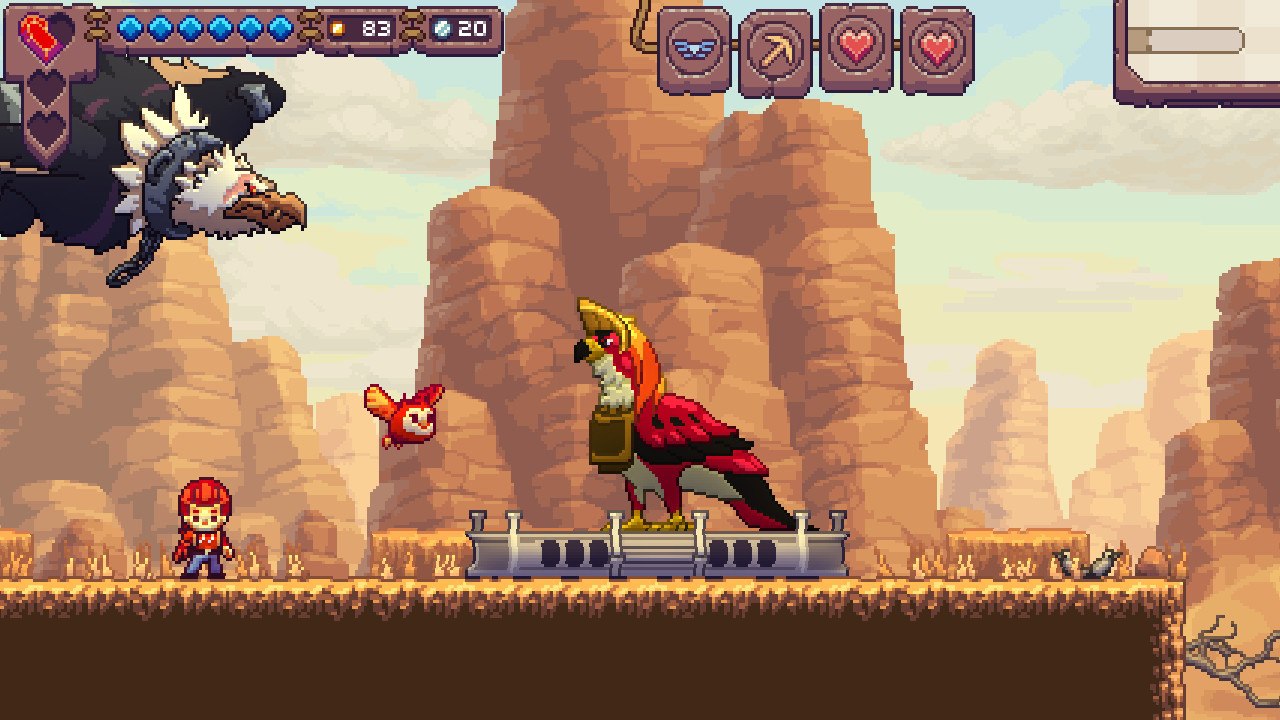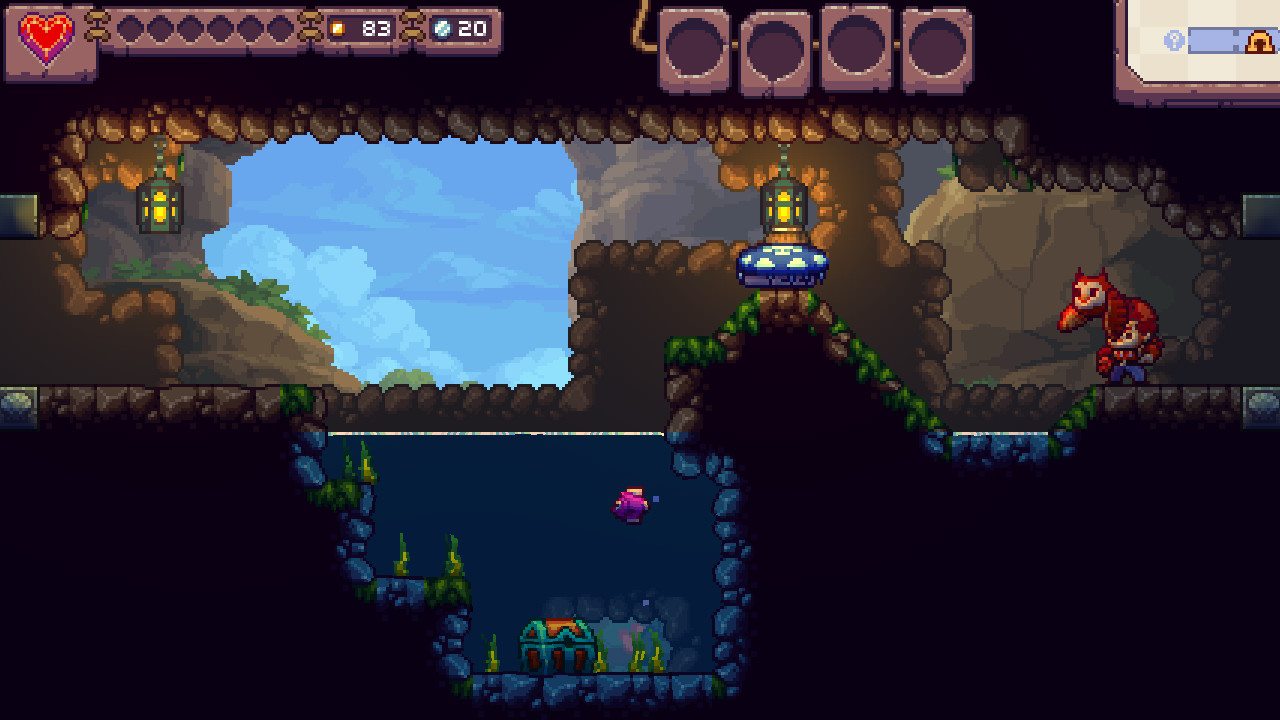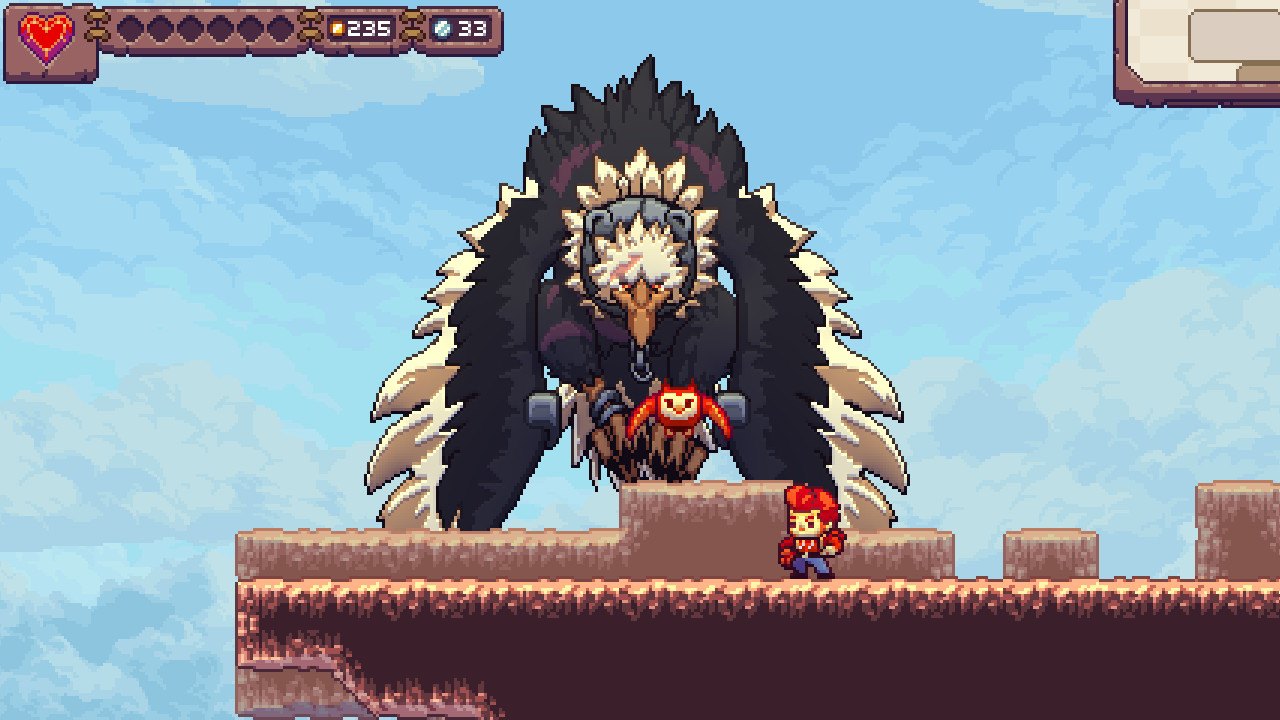Our Verdict
A refreshing hybrid of Metroidvania and roguelite, unfortunately hampered by inconsequential power-ups.
PC Gamer's got your back
What is it? A falconry inspired Metroidvania / roguelike hybrid
Expect to pay $20 | £16 | AU$29
Developer Pixelnicks
Publisher Screenwave Media
Reviewed on Core i7-4720HQ, 16 GB RAM, GeForce GTX 980M Multiplayer None
Link Official Site
Eagle Island is about exploring a mysterious shapeshifting island while pelting its exotic wildlife to death with a docile bird. Is this how falconry works? I don’t know. But you’re definitely using a lovely creature as live ammunition, which is a bit of a shock at first. And then, after the shock wears off, actually pretty funny.
Quill is the main character, a cherubic pixel boy with a penchant for avian-led assault. Having witnessed the abduction of his pet owl Ichiro, he’s forced to traverse a gorgeous island with his remaining pet, Koji, in order to save it. The island is a dreamlike blend of airy waterside exteriors and moody caves, and the game’s structure is a refreshing hybrid of Metroidvania and roguelike. The overworld is static, but each sidescrolling dungeon is randomised.
Birds of Prey
It’s not a roguelike, though. Overworld progress, as well as certain major abilities and bird attack types, stay unlocked permanently. It’s inside dungeons where the roguelike aspect rears its head: Dungeons contain another tier of abilities that are lost upon death, alongside all progress made towards an inevitable boss. The dungeon abilities comprise various buffs and bonuses, and each takes up one of four available ability slots. Upon death, all slotted abilities are lost, as is any currency accrued in the dungeon.

It actually works really well, to begin with: Those averse to the crushing loss of progress associated with roguelikes don’t have much to fear, because while the difficulty of the dungeons does ramp up significantly, there’s never the risk of losing a dungeon ability that strengthens the odds in your favour. Very few do. It's a bit of a relief, but also a problem for Eagle Island as it unfolds.
Combat is all about tossing Koji at all manner of native wildlife: Raging boars, angry fish, pleasant looking sentient flowers. Quill can only toss in one of eight directions, and at first this limitation feels stifling. Once adjusted to (with a controller—keyboard is not recommended for this game), the combat in Eagle Island can feel like a whimsically violent take on snooker. Each toss of Koji allows a short midair pause, and downing foes in rapid succession provides combo bonuses which can provide mana and, very rarely, replenish health.
Chirp off the old block
As a bird-loving shoot-em-up, Eagle Island works, and there’s no doubting how beautiful it is: both overworld and dungeon are brimming with lively animation and detail. But it’s ultimately shallower than it first appears. The first hour or so is spent unlocking an additional three attack types for Koji, which add fire, ice and electricity effects. Apart from situations where they’re required to solve breezy puzzles, I rarely used these more powerful attacks during moment-to-moment combat.
The scarcity of the mana required to use them, combined with the awkwardness of switching between attacks mid-combat, makes them feel useless most of the time.

That applies to the looted dungeon abilities too, which range from the ability to pirouette higher into the air, more rapid recovery for Koji, and various buffs to drop rates, among many others. Aside from a small handful of abilities—in particular, one that turns Koji into a homing missile—these tend to feel insignificant. None will flip the fate of your run. It’s possible to expand your maximum HP, and I invariably spent my cash on that, rather than abilities.
The dullness of the abilities undermines the light roguelike approach Eagle Island’s dungeons take, and while the level randomisation is a neat way to keep things fresh, it can’t hide the fact that, 90 percent of the time, you’re basically playing an 8-directional shooter (with a bird!).
The completion of dungeons unlocks permanent abilities that allow Quill to explore the overworld, and this is where the Metroidvania elements creep in. I loved this (very light) exploration in the overworld. On the other hand, the compulsion to explore the meandering dungeons is virtually non-existent because, basically, none of the in-dungeon abilities are worth straying off the beaten path for.
So Eagle Island is a slightly confused hybrid of a game: The movement, combat, mood and setting I loved, but it’s all hampered by dull abilities and a roguelike touch that doesn’t feel necessary. I reckon I’ll still boot Eagle Island up occasionally to feel the gracefulness of its movement and combat, but it’s hard to recommend to anyone but platformer diehards.
A refreshing hybrid of Metroidvania and roguelite, unfortunately hampered by inconsequential power-ups.

Shaun Prescott is the Australian editor of PC Gamer. With over ten years experience covering the games industry, his work has appeared on GamesRadar+, TechRadar, The Guardian, PLAY Magazine, the Sydney Morning Herald, and more. Specific interests include indie games, obscure Metroidvanias, speedrunning, experimental games and FPSs. He thinks Lulu by Metallica and Lou Reed is an all-time classic that will receive its due critical reappraisal one day.


